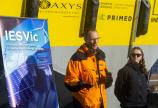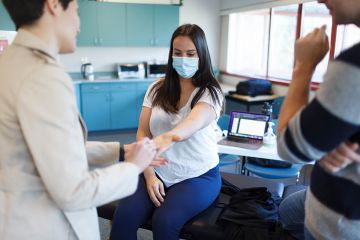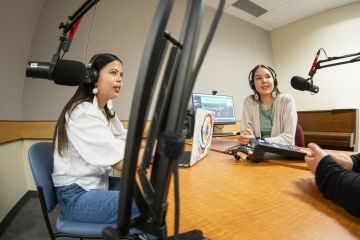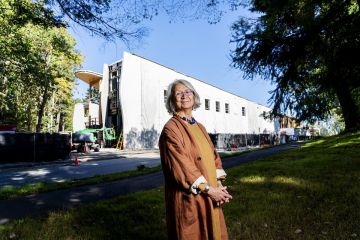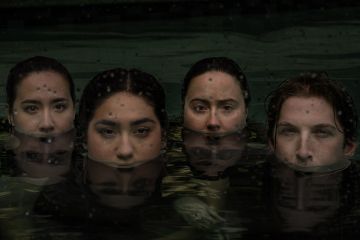Wind buoy could help remote coastal communities ditch diesel dependence
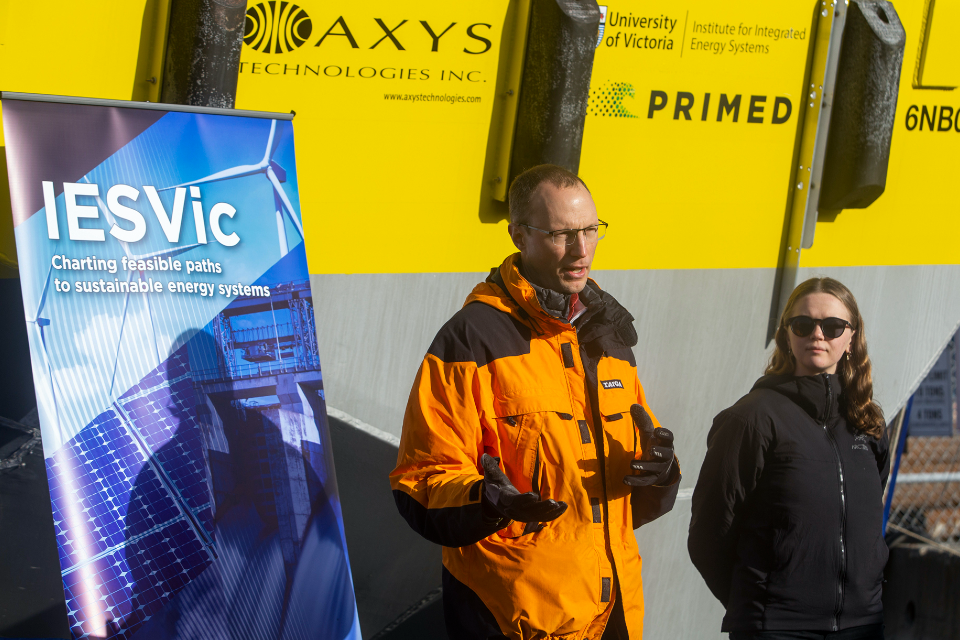
Weighing in at 5,500 kg, a locally designed and manufactured buoy will be the first of its kind in BC waters to relay rich data about offshore wind. The buoy is part of a unique University of Victoria project to help remote BC coastal communities replace or reduce their diesel requirements by harnessing wind power from the sea. It will be deployed in November near Trial Island.
Currently, off-grid communities tend to rely heavily on diesel power for their energy needs. This project adds a future option to use renewable energy sources, such as wind, to meet electrical requirements.
The highly customized buoy—measuring six metres long by three metres wide by nine metres tall and equipped with a wind turbine and 3D laser-scanning system—introduces an innovative data gathering process to BC waters. Over a period of about six months, the buoy will use meteorological and oceanographic sensors to continuously gather and transmit live data about wind speed and behaviour to researchers. The data is critical in helping address a significant knowledge gap that has prevented offshore wind energy produced by floating turbines from being used more widely, says Brad Buckham. The buoy is a project of UVic’s Pacific Regional Institute for Marine Energy Discovery (PRIMED), a lab led by Buckham and fellow mechanical engineering researcher Curran Crawford.
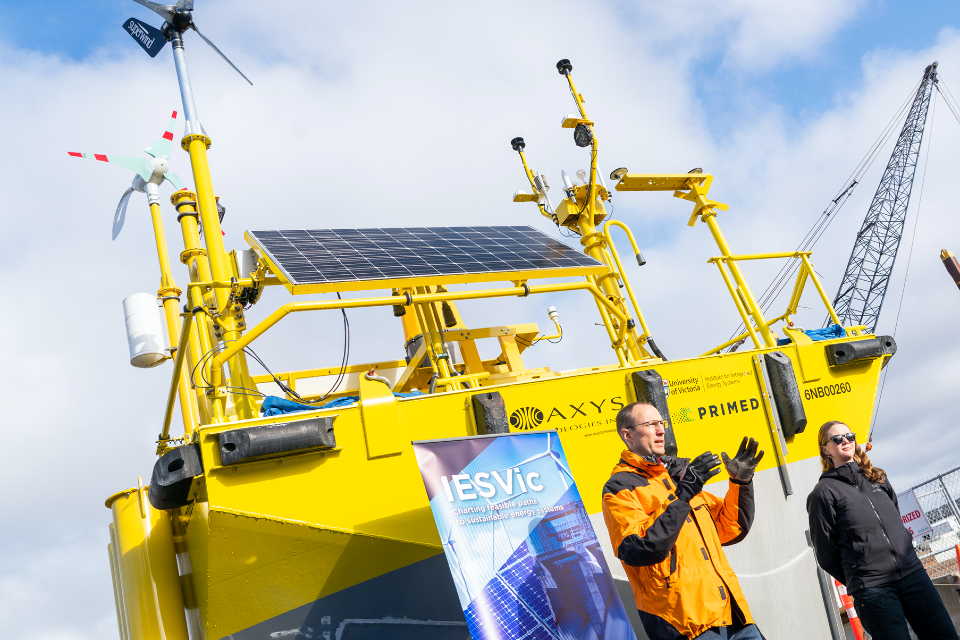
While land-based wind turbines still account for a small percentage of global energy needs, they have become an increasingly popular source of renewable energy, Buckham explains. By contrast, wind energy produced by turbines located in the ocean hasn’t been exploited to the same extent, mostly because of the lack of data needed by industry to develop accurate, certifiable, insurable technologies. “This buoy will be in place for a sustained period as part of a data collection campaign for the purpose of trying to support a floating offshore wind industry,” says Buckham.
Clean energy projects such as this reflect UVic’s commitment to United Nations Sustainable Development Goals (UN SDGs) to promote prosperity while protecting the planet. In particular, the UVic wind buoy project aligns with UN SDG Goal 7—to ensure access to affordable, reliable, sustainable and modern energy.
The PRIMED research team contracted Sidney-based AXYS Technologies to construct the buoy. Later this month, a tugboat will pull a barge carrying the wind buoy to the waters near Oak Bay, where the device will be deployed, a few hundred metres southwest of Trial Island.
“The group has been working on this for several years, so everyone is excited to see the buoy deployed and start seeing the data,” says research scientist and deployment manager Chloe Immonen, who joined the project in 2019.
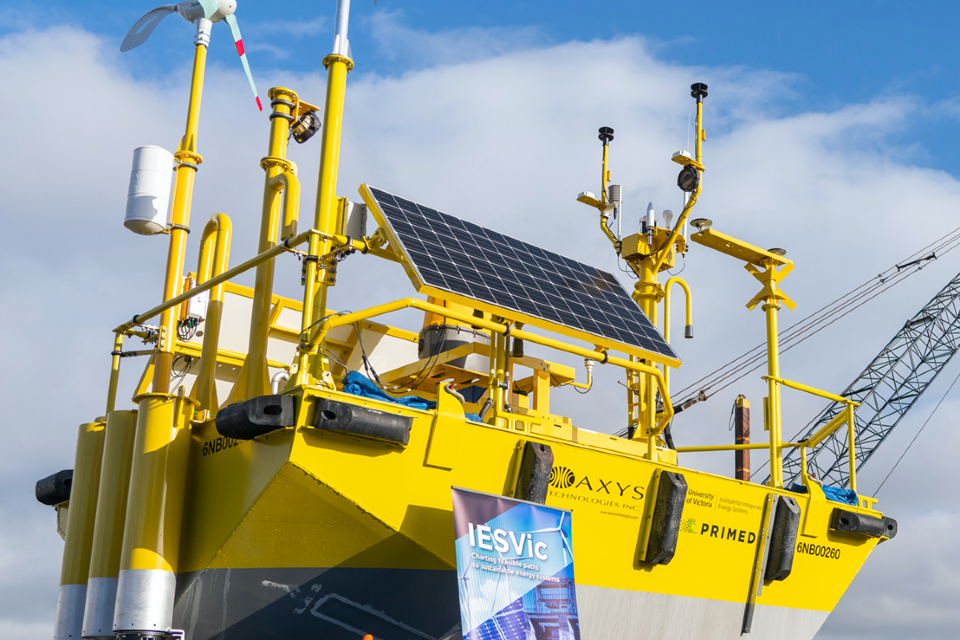
Immonen says the research being carried out with the buoy near Trial Island will not only benefit remote communities hoping to ditch diesel but will also contribute to a better overall understanding of the way wind can be harnessed to create sustainable energy.
This research was supported as a part of UVic’s Canadian-Pacific Robotic Ocean Observing Facility (C-PROOF), a project funded by the Canadian Foundation for Innovation and BC Knowledge Development Fund to build ocean observing capacity off the BC coast. PRIMED was created with support of Pacific Economic Development Canada (PacifiCan).
Click here for a backgrounder
A media kit containing a graphic image of the wind buoy is available on Dropbox.
--30--
Photos
Media contacts
Curran Crawford (PRIMED lab & Department of Mechanical Engineering) at 250-721-7960 or curranc@uvic.ca
Anne Tolson (Engineering and Computer Science Communications) at 250-812-6309 or engrcomm@uvic.ca
Robyn Quinn (University Communications + Marketing) at 250-415-7020 or scomm@uvic.ca
In this story
Keywords: Indigenous, sustainability, clean energy, research, community, climate, technology
People: Curran Crawford, Brad Buckham, Chloe Immonen

